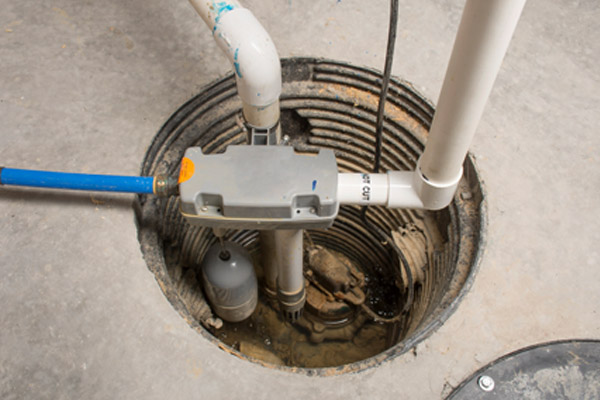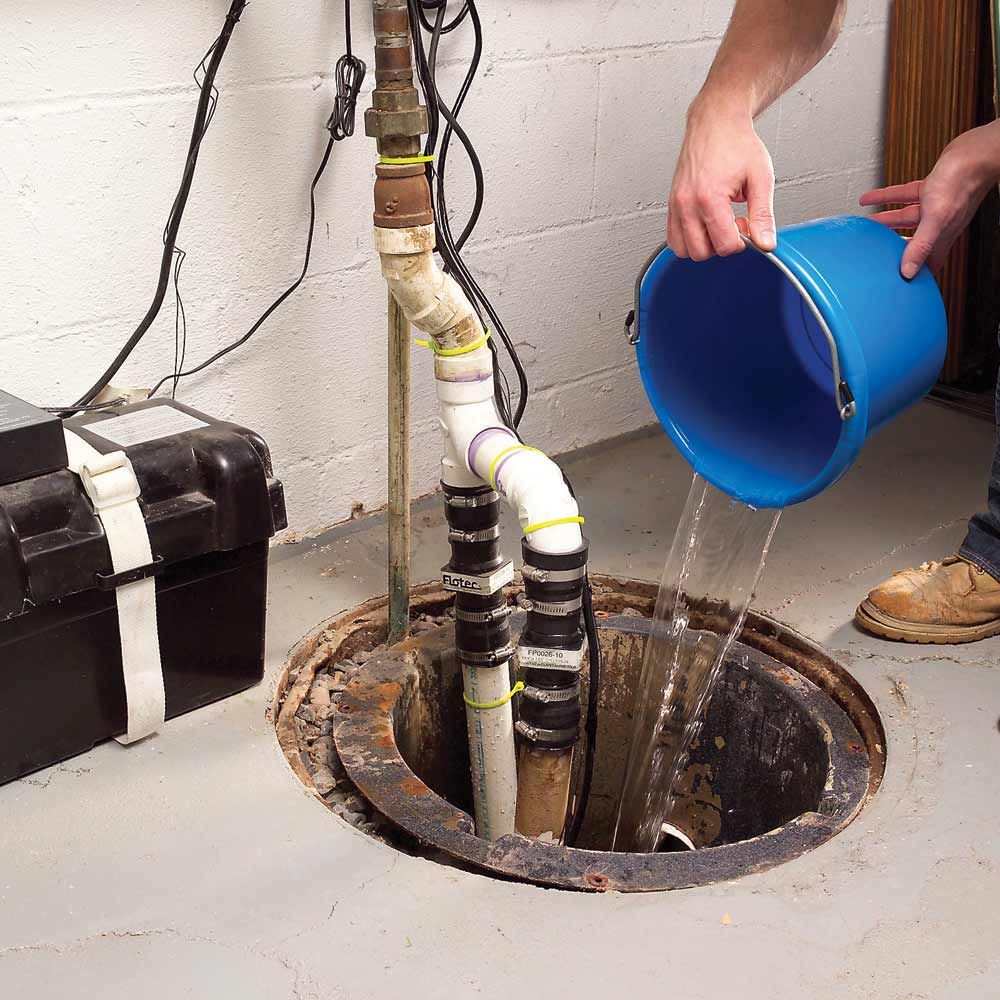In this article in the next paragraphs you will discover lots of professional material concerning Keep Your Sump Pump Clean, It'll Keep You Dry.

Sump pumps are important elements in numerous homes, specifically in locations prone to flooding or too much wetness. They assist avoid water damages by effectively removing excess water from cellars or crawl spaces. Nonetheless, like any other appliance, sump pumps call for routine maintenance to guarantee they operate efficiently when needed the most. Cleansing your sump pump is an important part of its upkeep, and understanding how to do it appropriately can save you from expensive repair services and possible calamities.
Intro
Preserving a tidy sump pump is important for its proper functioning and longevity. Ignoring this necessary job can cause blockages, breakdowns, and inevitably, water damage to your property. For that reason, finding out just how to clean up a sump pump is vital for house owners who rely upon these gadgets to maintain their basements dry and protected.
Indicators of a Dirty Sump Pump
Recognizing when your sump pump requires cleansing is crucial for protecting against prospective breakdowns. Some common indicators that suggest a dirty sump pump consist of strange sounds during procedure, decreased water flow, and visible particles in the pit. If you see any of these symptoms, it's necessary to clean your sump pump immediately to avoid any type of further issues.
Planning for Cleaning
Prior to you begin cleaning your sump pump, it's necessary to take some safety precautions. Begin by shutting off the power to the pump to prevent any kind of electric mishaps. In addition, wear proper safety gear, such as gloves and goggles, to safeguard yourself from dirt, particles, and potential pathogens.
Understanding the Sump Pump
Prior to diving into the cleaning procedure, it's vital to have a standard understanding of just how a sump pump works. Typically installed in a pit or basin listed below the basement flooring, a sump pump includes several vital elements, including a pump, a float button, and a discharge pipe. When water gathers in the pit, the float button turns on the pump, which then pumps the water out through the discharge pipeline, far from the structure's structure.
Detailed Guide to Cleansing a Sump Pump
Shutting down the Power
Begin by disconnecting the power supply to the sump pump to stop any kind of accidents while cleansing.
Looking For Proper Performance
Prior to reinstalling the pump, perform a quick test to guarantee that the float switch triggers the pump correctly. Pour some water into the sump pit and observe the pump's procedure. If every little thing is functioning appropriately, you can reassemble the pump and reconnect the power supply.
Removing Debris and Dirt
Use a container or an inside story to get rid of any kind of noticeable debris, dirt, or sediment from the sump pit. Dispose of the debris appropriately to prevent it from clogging the pump or the discharge pipeline.
Cleaning the Pump and Float Switch Over
When the pit is free from debris, meticulously eliminate the pump from the pit. Inspect the pump and the float switch for any type of indicators of damages or wear. Use a soft brush or cloth to clean up the surfaces and remove any type of built up crud.
Purging the System
After cleaning up the pump and float switch, purge the sump pit with clean water to remove any remaining dirt or debris. This will certainly help guarantee that the pump runs smoothly and successfully.
Upkeep Tips to Keep Your Sump Pump Clean
Along with periodic cleaning, there are numerous maintenance suggestions you can follow to maintain your sump pump in ideal problem:
Conclusion
Cleansing your sump pump is a vital aspect of its maintenance and ensures that it runs properly when you require it the most. By adhering to the actions laid out in this guide and including routine upkeep right into your routine, you can expand the lifespan of your sump pump and shield your home from water damage.
6 STEPS ON HOW TO CLEAN A SUMP PUMP PROPERLY
UNDERSTANDING SUMP PUMPS
Your sump pump plays a crucial role in protecting your home by managing and removing excess water. It primarily functions as a “shield”, guarding your basement against the damaging effects of water accumulation. The pump is housed in a sump pit in the lowest part of your basement, and its job is to pump out any water that collects there.
During heavy rainfalls or when snow melts rapidly, water can infiltrate your basement, posing potential risks like flooding, structural damage, and harmful mold growth. Here, the sump pump springs into action, pumping out the intruding water and directing it away from your home.
SAFETY FIRST
Before cleaning, remember to prioritize safety. Disconnect the sump pump from the power source to prevent any accidental electric shocks. Also, wear sturdy gloves to protect your hands from any sharp or dirty components within the pump.
REMOVE THE SUMP PUMP
After ensuring your safety, the next step is to remove the sump pump from its pit. Doing this might require careful maneuvering as you don’t want to damage any pump components. Once removed, clean the sump pit to remove any accumulated debris or sludge.
INSPECT THE PUMP
Inspect the pump for any visible signs of wear or damage. Check the power cord, float switch, and impeller housing. If any components look worn out or damaged, consider replacing them to ensure optimal performance.
CLEAN THE PUMP
Thoroughly clean the pump with warm, soapy water. Make sure to rid it of any dirt, gravel, or other debris that might impede its performance. You can use a toothbrush to clean the small, hard-to-reach parts of the pump.
REINSTALL THE SUMP PUMP
Reinstall the pump into the sump pit Make sure it’s positioned correctly to remove the water effectively Once it’s back in place, reconnect it to the power source TEST THE PUMP
Finally, pour some water into the pit to ensure the pump works correctly. It should start automatically and begin pumping out the water; if it doesn’t, check the power source and the positioning of the pump.
Remember, while cleaning your sump pump is an essential part of home maintenance, hiring a professional plumber for a thorough inspection and cleaning at least once a year is also important. This will ensure that your pump is in optimal condition, ready to protect your home from potential water damage.
BEST PRACTICES FOR CLEANING SUMP PUMP DISCHARGE PIPES
Regular Inspection: Regularly inspect your discharge pipes, especially during heavy rainfall or snowmelt periods. Look for any signs of blockage or damage. Early detection of problems can prevent serious issues down the line. Periodic Cleaning: Over time, sediment and debris can accumulate in the discharge pipes, impeding the flow of water. Regular cleaning helps keep the pipes clear and functioning efficiently. You can use a high-pressure water jet to effectively clean the pipes. Insulation During Winter: In colder climates, discharge pipes can freeze, blocking the outflow of water. Protect your discharge pipes from freezing temperatures by insulating them with foam pipe insulation. This will ensure the sump pump can continue to discharge water even in freezing conditions. Proper Positioning: The discharge pipe should be positioned to direct water away from your home’s foundation. Improper positioning can lead to water seeping back into the basement. Ensure the pipe is long enough and angled correctly. Installation of a Check Valve: A check valve prevents water from flowing back into your sump pit after the pump has pushed it out. Installing a check valve helps maintain the efficiency of your sump pump and reduces the risk of flooding. Minimize Pipe Turns: Every curve or turn in the discharge pipe can decrease the efficiency of water flow. By minimizing turns and bends in your discharge pipe, you can increase the efficiency of your sump pump. https://www.fullspeedplumbing.com/how-to-clean-a-sump-pump-properly9999/

Hopefully you enjoyed our part about How to Care for Your Sump Pump. Thanks for taking time to read our piece of content. Loved our piece of writing? Please share it. Help somebody else check it out. I take joy in your readership.
This Page